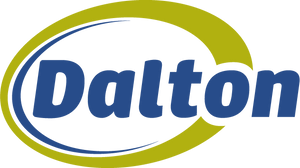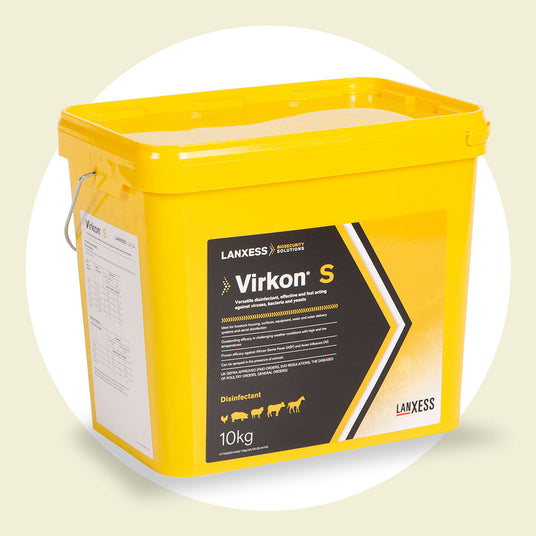If you're a poultry farmer, you've probably lost sleep worrying about Salmonella. And rightly so - it's one of the biggest threats to your flock's health and your farm's profitability.
But here's the thing: Salmonella outbreaks aren't inevitable. With the right knowledge and a solid prevention plan, you can keep your birds safe and your business thriving.
In this guide, we'll walk you through everything you need to know about preventing Salmonella on your poultry farm - from understanding how it spreads to building bulletproof biosecurity measures.
What Exactly is Salmonella?
Let's start with the basics. Salmonella isn't just one bug - it's actually a family of over 2,500 different types of bacteria. The ones that cause the most trouble for poultry farmers are usually Salmonella Enteritidis and Salmonella Typhimurium.
Here's what makes Salmonella such a persistent problem:
It's incredibly tough
• Survives in temperatures from 5°C to 46°C (perfect for British weather)
• Lives for months in dried faeces, feed, and dust
• Forms protective biofilms that make it even harder to kill
• Tolerates pH levels from 3.8 to 9.5
It's everywhere
• Lives happily in soil, water, and on surfaces
• Carried by wild birds, rodents, and insects
• Can contaminate feed mills and transport vehicles
• Spreads through seemingly clean environments
It's sneaky
• Most infected birds don't show obvious symptoms
• Can be passed from parent birds through eggs
• Spreads between birds without you noticing
• Builds up silently in your farm environment
How Salmonella Gets Into Your Farm
Understanding how Salmonella arrives on your farm is crucial for stopping it. Think of your farm as a fortress - you need to know where the weak spots are.
The Main Routes In
From Parent Stock
The most frustrating route - Salmonella can pass from infected breeding birds straight through the eggshell to chicks. If your day-old chicks arrive already infected, you're fighting an uphill battle from day one.
Feed and Water
Contaminated feed is a classic entry point. Feed mills can harbour Salmonella, and it can multiply during storage if conditions are right. Water systems can also become contaminated, especially if you're using untreated surface water.
Wild Visitors
Your farm is like an all-you-can-eat buffet for wild birds, rodents, and insects. Unfortunately, they're not paying customers - they're potential disease carriers.
• Wild birds - pigeons, crows, and starlings love poultry feed and can contaminate it with their droppings
• Rodents - rats and mice don't just eat your feed, they contaminate it with Salmonella-laden faeces
• Insects - flies, beetles, and other bugs can carry bacteria between contaminated areas and your birds
People and Vehicles
Every person and vehicle that enters your farm is a potential carrier. This includes:
• Feed delivery lorries
• Catching crews
• Veterinarians
• Farm workers
• Visitors (including yourself if you've been to other farms)
Equipment and Housing
Shared equipment between houses or farms is a classic transmission route. Even your "clean" equipment might be harbouring bacteria in hard-to-reach places.
The Spread Within Your Farm
Once Salmonella gets a foothold, it spreads through:
Direct Contact
Bird-to-bird transmission through the faecal-oral route. One infected bird contaminates the environment, others pick it up while foraging or drinking.
Environmental Contamination
Salmonella builds up in litter, dust, and on surfaces. It's particularly fond of:
• Cracked concrete floors
• Wooden structures
• Feed lines and water systems
• Dead bird areas
Airborne Transmission
Dust particles can carry Salmonella between houses, especially during cleaning and between crops.
Building Your Defence Strategy
Preventing Salmonella isn't about doing one thing perfectly - it's about doing lots of things well. Think of it as building layers of protection.
Layer 1: Keep It Out
Source Control
• Work with reputable hatcheries that have strong Salmonella monitoring programmes
• Ensure your feed supplier has robust quality controls
• Test incoming feed regularly, especially during hot weather
• Secure water sources and test them regularly
Perimeter Security
• Maintain perimeter fencing to keep out larger wildlife
• Use bird-proof feed storage
• Install rodent-proof measures around buildings
• Control vegetation around sheds to reduce rodent cover
Layer 2: Control Access
Vehicle Protocols
• Establish a single entry point for all vehicles
• Require all vehicles to use disinfectant wheel baths
• Clean and disinfect vehicle cabs and loads before entry
• Keep delivery vehicles away from bird housing where possible
Personnel Controls
• Provide changing facilities and clean protective clothing
• Insist on farm-specific boots and coveralls
• Install effective boot dips at all building entrances
• Limit unnecessary visitors and maintain a visitor log
Layer 3: Environmental Management
Feed Management
• Store feed in sealed, rodent-proof containers
• Use feed within recommended timeframes
• Keep feed areas clean and dry
• Remove spilled feed promptly
Water System Hygiene
• Clean and disinfect water systems regularly
• Monitor water quality with regular testing
• Maintain water system integrity to prevent contamination
• Use water acidification where appropriate
Litter and Waste Management
• Remove mortalities promptly and hygienically
• Manage litter moisture to prevent bacterial growth
• Ensure proper ventilation to control humidity
• Clean and disinfect between crops thoroughly
Layer 4: Monitoring and Response
Regular Health Monitoring
• Implement routine Salmonella testing programmes
• Monitor bird performance for subtle changes
• Work with your vet to develop sampling protocols
• Keep detailed records of health and performance
Environmental Monitoring
• Test dust, litter, and surface samples
• Monitor feed and water quality
• Check rodent activity levels
• Assess cleaning and disinfection effectiveness
The Critical Role of Cleaning and Disinfection
This is where many farms fall down. Cleaning and disinfection isn't just about making things look tidy - it's about breaking the disease cycle.
The Two-Step Process
Step 1: Cleaning
You've got to physically remove organic matter before disinfection. This means:
• Dry cleaning to remove loose debris and dust
• Wet cleaning with detergent to remove stubborn organic matter
• Paying attention to cracks, crevices, and equipment internals
• Don't forget walls, ceilings, and ventilation systems
Step 2: Disinfection
Once surfaces are clean, you can apply disinfectant effectively:
• Choose a disinfectant proven against Salmonella
• Use the correct dilution rate for the job
• Ensure adequate contact time
• Work systematically to cover all surfaces
• Allow proper drying time before restocking
Choosing the Right Disinfectant
Your disinfectant choice matters. Look for products that:
• Have proven efficacy against Salmonella strains
• Work at the temperatures you'll encounter
• Remain effective in the presence of organic matter
• Are safe for use around birds when necessary
• Have official approvals (DEFRA, DVG, etc.)
Common Mistakes (And How to Avoid Them)
After 30 years in the industry, we've seen these mistakes time and again:
The "It Looks Clean" Trap
Visual cleanliness doesn't equal biosecurity. Salmonella is invisible to the naked eye and can lurk in apparently clean environments.

